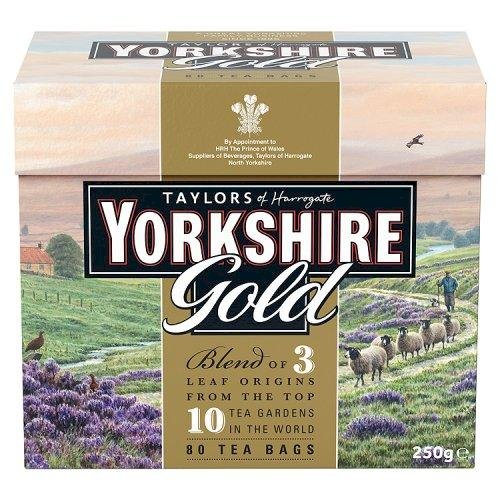Benefits Of User-Generated Content
User-generated content (UGC) is any content—text, videos, images, reviews, etc.—created by people, rather than brands.

Do you have some new cool clothes you want to share with the world? You're likely to snap a photo and share it on your social media profiles. Perhaps you have a new product and want to post an unboxing video on your YouTube channel. These are both user-generated content (UGC), regardless of whether you realize it.
Are you still not sure? We've got your back.
This article will explain what user-generated content means, as well as a few other details.
- Learn how UGC can help you in your campaigns.
- You can see the difference between big and small brands when they use UGC.
- Get practical tips to transform user-generated content into more conversions and engagement for your brand.
What is user-generated content?
UGC, or user-generated content, is original content that customers create and publish on social media. UGC can take many forms: images, videos and reviews as well as testimonials or podcasts. Using UGC platform you can fetch the content created by your users.
From where does UGC content originate?
Customers
You can think of unboxing videos on TikTok and praise-filled Instagram posts. Your customers are often the most visible group you can seek UGC from. This is either because they have asked for it or because organically, they share content about you.
Loyalists to a brand
Loyalists can be called advocates or fans. Whatever you call your most loyal customers, they are often the most passionate about your business. This audience is the best to reach out to to request specific UGC content, as loyalists are passionate about worshipping the brand.
Employers
Employee-generated content (EGC), shows the value and story behind your company. You could have photos of employees picking up or packing orders, or even a video showing your team discussing why they love their job. This content is behind-the scenes and helps to establish brand identity. It can also be used across social media and ads to show authenticity.
Why is it important to use user-generated content?
UGC can be used at all stages of a buyer's journey in order to increase engagement and conversions. You can use customer-centric content on social media, email, landing pages and checkout pages.
You can take authenticity to the next level
Today, brands must compete for attention online. Buyers are now more selective in choosing the brands they interact and buy from, particularly the fickle Gen Z.
It's not only consumers that are passionate about authentic content. 60% marketers agree that authenticity is as important as quality in creating successful content. UGC is the best content type to get feedback from customers.
Do not fall for the temptation to falsify user-generated posts and campaigns. False sentiment can quickly be detected by your audience, which could cause serious damage to your brand reputation. Make sure that you only use UGC from customers, brand loyalists, and employees.
People trust others, so consider UGC the modern-day word-of mouth.
With consumers 2.4x more likely view user-generated content authentically than content created by brands, it is the right time to invest in authenticity-driven social media marketing strategies.
It helps to build brand loyalty and community.
UGC offers customers the unique opportunity to be part of a brand's growth and not just a spectator. This increases brand loyalty and affinity. People thrive when they are part of something bigger than themselves. Creating UGC gives them that opportunity.
UGC allows brands and consumers to have conversations. This level of interaction can help build and grow a community.
It is also a way to build and strengthen relationships with audience members, which can lead to more brand loyalty.
Acts as a trust signal
Remember Fyre Festival, which was advertised as an " immersive musical festival over two transformative weekends", but was in fact rain-soaked tents set up in a field without electricity or food? This is why people distrust marketers and advertisers.
In reality, 9% Americans don't trust mass media. This is not surprising considering the increase in fake news from the 2020 global pandemic.
To be trusted, brands must work harder than ever. This is because 93% marketers agree that customers trust content created by businesses more than brands' content. UGC therefore represents a great format for businesses to increase their trust scores.
UGC is used by audiences as a trust signal, just like how they would ask their family and friends for opinions. Over 50% millennials base their purchase decisions on recommendations from family and friends. This is where UGC shines, since it is exactly that: a personal recommendation.
Convert more customers and influence buying decisions
In the final stages of buyer's journey user-generated content can be extremely influential. You want to convert your audience into buying and influence them to make a purchase.
UGC is a social proof that your product deserves to be bought. Your audience may see people wearing your product and decides to buy it.
You can show non-human customers how your product works, just like Casper in this UGC post by Dean the Beagle.
Flexible and adaptable
UGC can also be used in marketing campaigns via social media, making it an omnichannel strategy.
You could include UGC images in an abandoned cart email to nudge buyers to buy or add user-generated content on key landing pages to increase conversion rates.
Calvin Klein even made a landing page for UGC content. Showing real Calvins worn by customers allows shoppers to endorse the brand. It also shows how the products look on real people, not models.
Marketing via influencers is more cost-effective
An influencer is an employee that costs on average, which can easily run into the millions. Asking your customers to share posts about your product is a cost that can easily run into the millions. It's almost nothing.
UGC can be a cost-effective method to grow your business and add a new strategy to your marketing mix. You don't need to hire a creative agency to create brand assets and content for your campaigns.
Connect with your audience to connect with the most important people within your business. Your channel will attract many people who are excited about being featured.
UGC is a cheaper option for smaller brands and those who are just starting out than larger brand awareness campaigns.
Harmony with social commerce
Social commerce is the future of online shopping. This allows you to shop directly on your favorite social media channels. Social commerce allows users to convert directly within their social media apps, instead of having to go off-network in order to make a purchase.
Let's suppose you scroll through Instagram looking for a new bathrobe. Tap to find out more about the product and to make a purchase. This is social commerce at its best.
UGC and social-commerce work well together, as UGC has a significant impact on conversions. Nearly 88% of people believe that UGC influences their purchase decision. This makes user-generated content and Social Commerce a perfect match.
Types of user-generated material
Social media marketers must have user-generated content this season. It comes in many formats and styles to ensure you find the right fit.
- Images
- Videos
- Content from social media (e.g., tweets about your brand)
- Testimonials
- Review of product
- Live streams
- Blog posts
- YouTube content
Examples of the best user-generated content
Brands, regardless of their size, use user-generated content for marketing, conversions, social engagement, expansion, and cost-effective growth.
GoPro
GoPro, a video equipment company, uses UGC to maintain its YouTube channel. Its top 3 videos were all originally shot by customers. These three videos had racked up more than 400 million views as of December 2021.
It's not bad for content that GoPro did not have to produce.
UGC for the company grew so much that they have their own awards and show. They also promote daily challenge to encourage their customers to be creative.
LuluLemon
LuluLemon, a Canadian athleisure brand, is not to be confused with multilevel marketing company LuLaRoe. It's best known for its yoga clothes and expensive leggings. They asked brand loyalists and followers to upload photos using #thesweatlife to increase brand reach on social media.
This created a wealth of UGC content that LuLuLemon could easily find and repurpose. It also organically increased the company's brand awareness across social media by sharing content from brand ambassadors.
La Croix
LuluLemon's sparkling water brand La Croix uses a hashtag (#LiveLaCroix), to collect UGC on social media. La Croix doesn't rely on brand loyalists. Instead, it shares content from anyone, regardless of their number.
This makes user-generated content more relatable because people will see themselves in these photos and not brand ambassadors or loyalists who have higher followinger counts.
Share
What's Your Reaction?
 Like
0
Like
0
 Dislike
0
Dislike
0
 Love
0
Love
0
 Funny
0
Funny
0
 Angry
0
Angry
0
 Sad
0
Sad
0
 Wow
0
Wow
0














